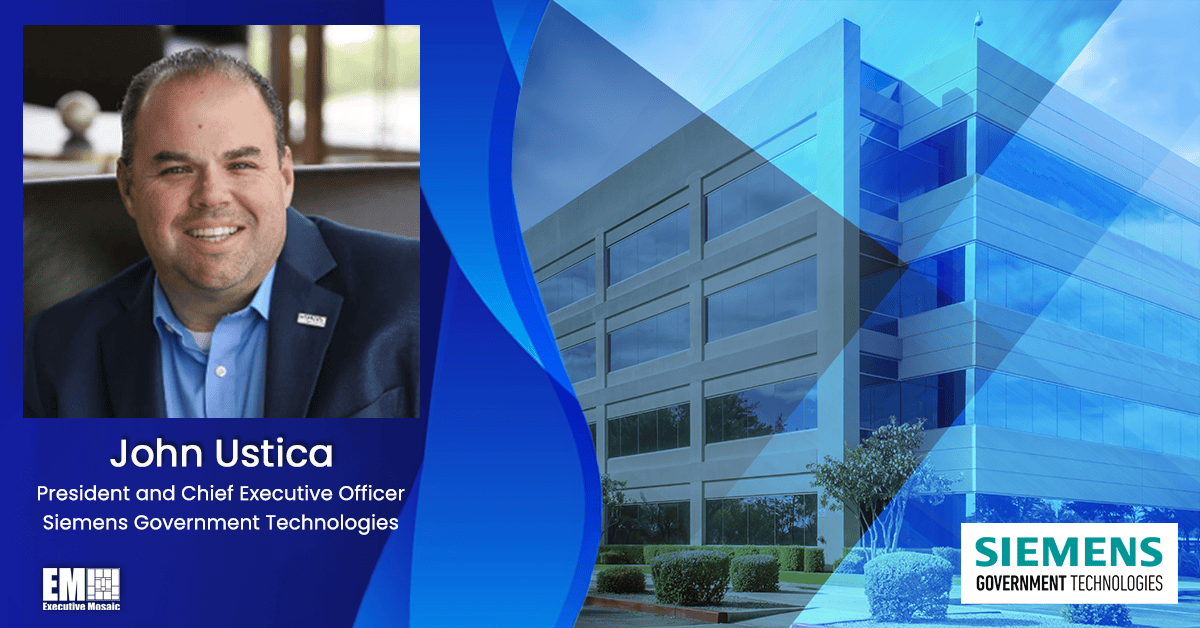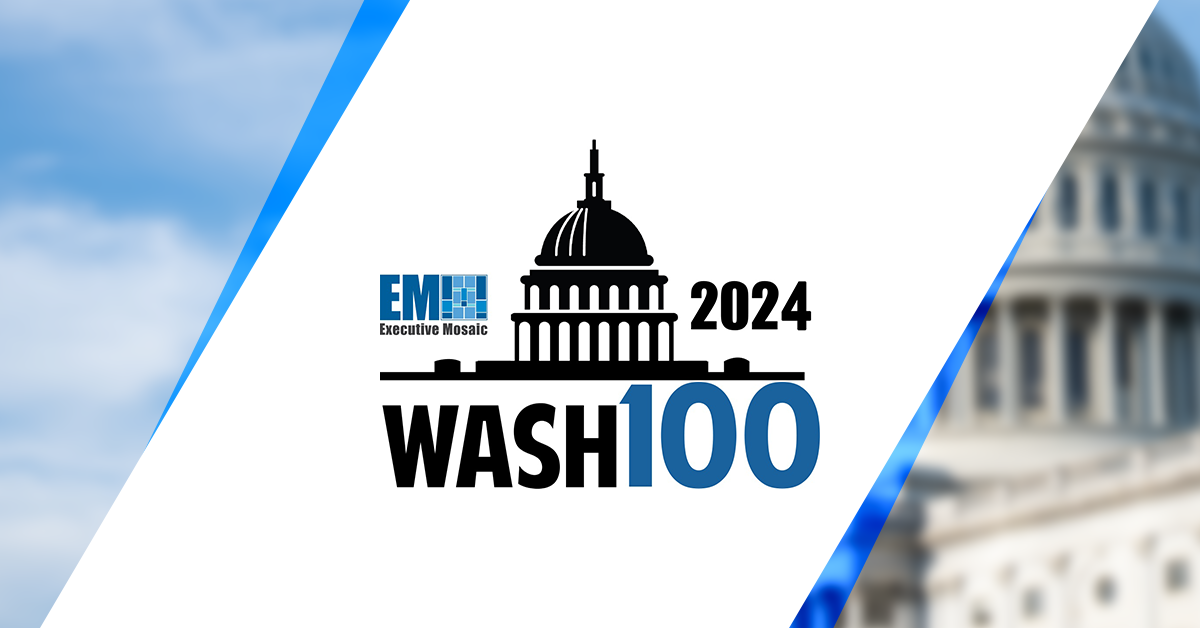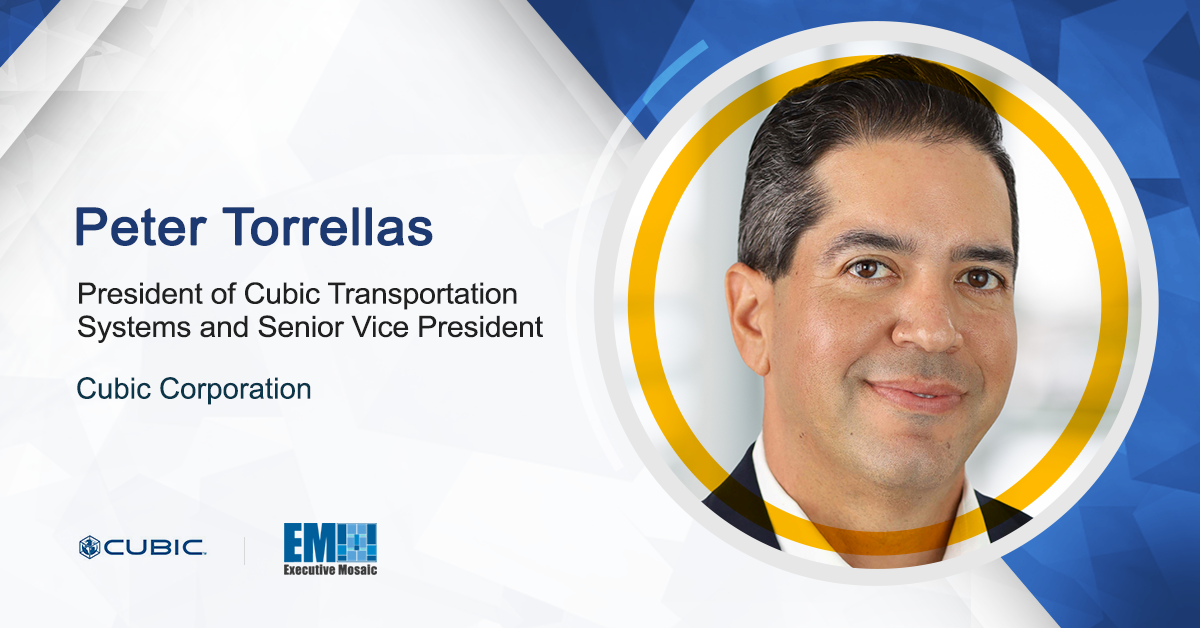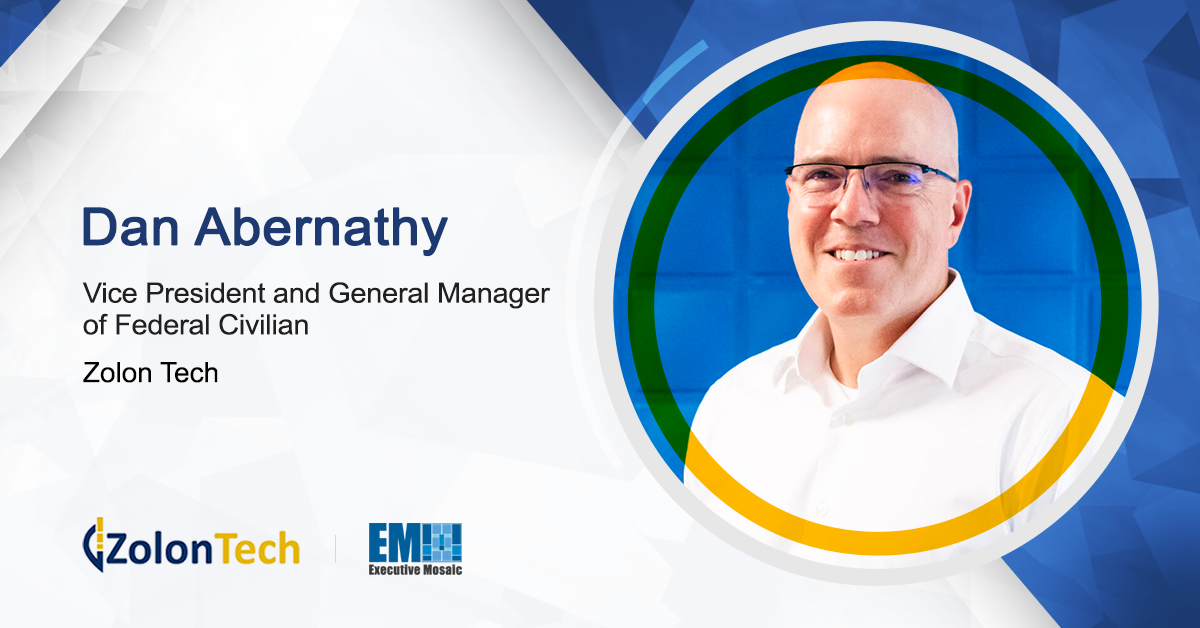John Ustica’s career with Siemens spans over two decades — a tenure whose length he sees as a strategic benefit in the government contracting landscape today. His previous posts at the technology and manufacturing company cover a wide range of roles from financial leadership to manufacturing plant management as he has moved up the ranks.
Ustica’s more than 20 years of leadership at Siemens has now led him to the helm of the organization’s federal arm as president and CEO of Siemens Government Technologies — a role he officially stepped into in October 2022.
GovCon Wire sat down with Ustica to talk about his deep roots with SGT and gain some insight into his priorities as he leads the company’s next phase of growth. In his Executive Spotlight interview, Ustica notably highlighted the strong company culture that has propelled him to his current position and continues to cultivate leaders from the inside.
Read below for the full interview with SGT’s John Ustica.
GovCon Wire: First of all John, congratulations on being named president and CEO of Siemens Government Technologies! What attracted you to the role, and what do you hope to accomplish during your tenure?
John Ustica: “For me, it’s more about what has kept me with the company. On top of the four years I’ve been with SGT, I was with Siemens for 17 years before that. The thing that has continually kept me with this company is its very strong connection to people, its development of people and this huge sense of purpose to the customer.
We are set up for a very specific purpose, and that is to take the innovation and all the amazing things that Siemens does and get it to the world’s largest customer, the U.S. federal government. We help keep things safe and keep the economy going. We help serve the missions of the different departments and the DOD.
So for me, it’s really taking that 17 years of experience I had with Siemens and translating it now into this new market. In today’s world, it’s a little bit different to have somebody who’s been with a company for a long time, but I just keep learning and I keep growing. As long as that happens, I intend to stay here, and that’s one of the things that I love about Siemens.
The main reason I took the CEO job was number one, I really believe in the mission, and number two, I really love working with the team here — I couldn’t imagine leaving them. So when I had the opportunity and the board asked me to step into the CEO role on an interim basis, of course, I said ‘yes.’
Having done that job now for a few months, I wanted to step in and stay. It has just been a hugely rewarding experience. I have an amazing executive team and a great team at SGT to work with. It was just a natural thing to stay as part of the team and to lead us into the next chapter here at SGT.”
GCW: What are the core values that are important to SGT’s culture? How has your team developed its workflow and ability to drive success in such a competitive market?
Ustica: “Number one, it’s about people development. The current CFO, Katy Nierman, was on my staff when I was a CFO, and she agreed to step up on an interim basis and did an amazing job. We executed a succession plan, and we did a great job of keeping what I would call ‘continuity in the business,’ and also showing growth.
Katy has a long career with Siemens, so she’s developing that now further and I think in a different way because at SGT we are a separate, wholly-owned, but affiliated company with Siemens. It’s just a great opportunity to take the change in leadership and produce a course of development opportunity for somebody internally.
I think that says a lot about our culture. We want to grow people, we want to give them opportunities, we want to give them new challenges. And that’s just one example. We had the same situation with our VP of HR, Rebecca Hannahs — she was promoted internally. Our head of IT, Paul Rimbey, was promoted internally.
We have this really strong track record of bringing in great people from the outside — for example our general counsel, Matthew Madalo, came from the outside and is doing a great job — and where we can, we try to mix it in with a really strong internal promotion opportunity and allow our people to grow and develop.
It’s all about having a good mix to build the right diversity and the culture. And as a leader, it’s extremely rewarding for me to see one of the folks that I work with get promoted or get a new opportunity.”
GCW: Can you talk about your strategic goals and growth opportunities for the coming year? What do you hope to accomplish, and are there any new markets that you’re keeping an eye on in the federal sector?
Ustica: “There are two main things, and the first is that we’ve just gone through the FedRAMP process. We’ve got the Siemens Defense Cloud now live. We have Teamcenter X, which has gone through the process — the second application is on its way through at this point, and I think there will be a third that’ll be quickly coming behind it.
This is us making the investment in our software and tools to be able to deliver them in a compliant and secure environment. If you look at the cybersecurity environment today, it’s becoming more and more important for the federal customer to have these FedRAMP products, so Siemens is heavily investing in that.
Getting that product lifecycle management Teamcenter tool is really the backbone, from a PLM perspective, for a lot of the large programs in the DOD. We want to make sure that we are providing the highest level of cybersecurity.
Secondly, we just actually launched a mentor-protege joint venture with a company called NMR. One of the huge priorities from the Biden administration is ramping up the involvement of small businesses. We want to be right there with that and giving back and helping small businesses grow.
This also allows us to work with the intelligence community a little bit more closely — we can use the industry knowledge that NMR has while bringing in Siemens products and resources to serve customers in ways that we couldn’t individually. Working with small businesses and serving a customer with sensitive national security missions is really a win-win for both of us.
So those are the two main things, but we’re also doing a lot of stuff around energy resiliency right now. It’s a huge priority in the executive branch, in the DOD and in other sectors of government to be resilient, but also to be green. Siemens provides a lot of solutions in that area, and it’s everything from the EV solutions that we sell via some of our commercial businesses through really looking at how to make the installations resilient.
True resiliency is not just, ‘I have a diesel generator sitting behind a building,’ but it’s really having a fully encompassing plan for how I’m going to operate a facility in a case where I don’t have electricity for two weeks.
It’s, ‘How am I going to make my own power? How am I going to distribute my own power? How am I going to make sure that everything is in place so in the event that something goes wrong — whether it’s a natural disaster or some type of cyber attack on the power grid — everything can still function?’ That’s going to become more and more important as we move forward.”
GCW: Tell me more about your digital transformation efforts, especially as they relate to digital twin technology. How are digital twins accelerating modernization?
Ustica: “One of the things that we’ve really been driving together, especially with the Navy, is around digital transformation. One of the big buzzwords out there right now is ‘digital twin’ or ‘digital thread’ — in other words, building a great model.
We can build a digital twin, which allows us to accelerate, model and put data in that model to see what will happen. But when you think about supply chain, the resiliency that we were talking about before and the digital tracing of assets, there are so many things that are untapped in digital twins and in this digital transformation for the federal government. We’re just scratching the surface.
The digital twin model is really driven by the data you put in it. As we get more information, as we put more data into these digital twin models, the outputs become better and better. We’ve been talking to the armed forces about simulating, ‘What happens when this happens at the facility? Let’s get the data in, let’s use it for our disaster recovery relief.’
When I was on the commercial side of the business, and I was running a manufacturing facility, we did this type of modeling all the time to look at, ‘Okay, if a tornado comes through rural Alabama, for example, and blows our roof off, what are the things that we’ve got to do in order to get the facility up and running to serve the customers?’
In the government space, it’s not any different, although the stakes could be a lot higher. Again, it’s using those data-driven models to improve the function of what we’ve made the digital twin for. And we can do that in a cloud environment — we can share the data and have all the security that we talked about with the FedRAMP solutions, but also do it in tandem with these digital twin and digital thread solutions. Siemens is really at the forefront of offering those technologies into the government.”
GCW: How can industry and the federal government collaborate better in order to accelerate innovation and meet emerging mission needs?
Ustica: “We are doing our part to foster engagement and collaboration through industry groups committed to supporting our government customers and through organizations such as the Aerospace Industries Association and Business Executives for National Security.
I’m a firm believer in the fact that when we act as partners, we can solve problems much better. If you look at the high-level leadership in the armed forces and in other parts of government, they’re publicly saying, ‘We, as the government, know what we want, but we need industry to figure it out.’
The way we will move forward as a country is by taking the large challenges the government has and partnering with industry to help solve them. Allowing industry to address some of the government’s toughest challenges is not only more cost efficient in an environment of increasingly constrained budgets, but it also opens access to a broad array of our brightest minds across industries with a multitude of perspectives.”







